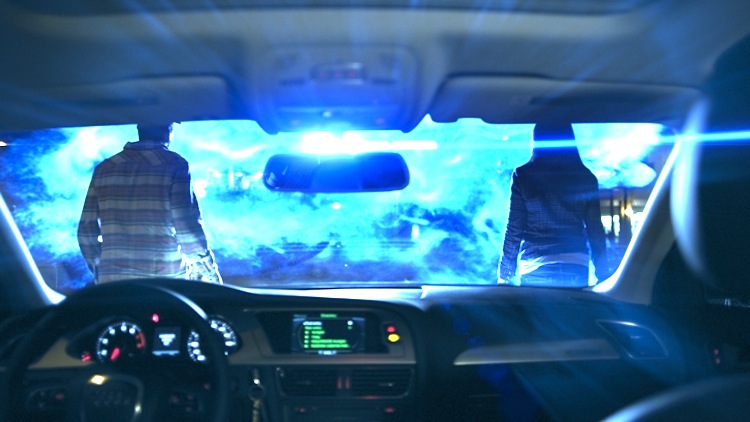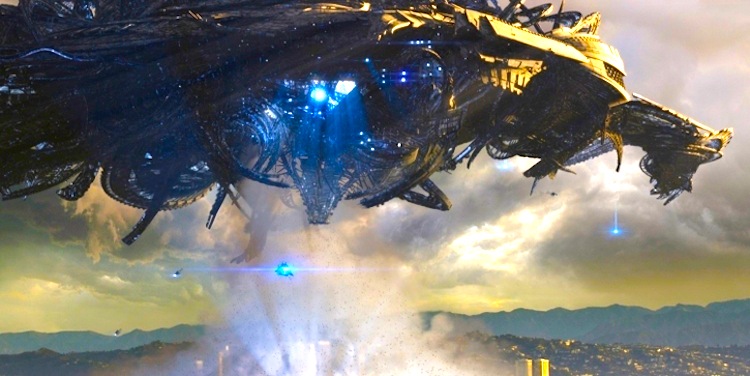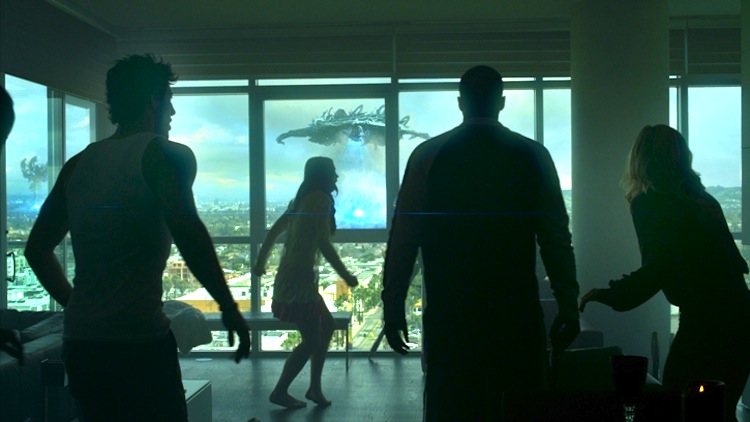By Jason Apuzzo. Imagine this storyline: foreign invaders launch a spectacular strike on a major American city, killing thousands of people and destroying huge buildings in the process. The strike takes place in the early morning hours, when most citizens are still sleeping or just getting up for the day. At the same time, these invaders aren’t merely out to kill – but in a weird way they’re also here to ‘convert’ and/or steal the minds of their human prey, so humanity can be subsumed into their larger cause. And upon this ‘conversion,’ human beings begin to feel unnaturally powerful and aggressive – just before suicidally extinguishing themselves.
Oh, and the only human recourse to this horrific invasion is the massive intervention of the U.S. military, up to and perhaps including nuclear strikes.
Sound familiar?
No, this isn’t a movie about 9/11 – and yet it might as well be. Following in the footsteps of J.J. Abrams’ Cloverfield and Steven Spielberg’s War of the Worlds (and to some extent Abrams’ Star Trek) – not to mention, of course, James Cameron’s Avatar – Skyline is the latest sci-fi film to use a 9/11-style event as a framing device for its story of alien-vs.-human conflict.
How good Skyline is, however, is another question entirely.
The easiest and most obvious thing to say about Skyline is that it’s a low-budget, indie riff on the increasingly familiar alien invasion theme, and that it exploits certain aspects of post-9/11 anxiety to full effect. Much like J.J. Abrams’ Cloverfield or Star Trek, Skyline puts a group of largely vacuous 20-somethings into a high-pressure, Pearl Harbor-style situation in which its young leads need to to grow up and mature – very quickly.

At the same time, what Skyline makes perfectly apparent – and here, comparisons to Cloverfield and Gareth Edwards’ recent low-budget alien invasion thriller Monsters are apt – is that a burgeoning problem with the ‘alien invasion genre’ is the overall vacuity and narcissism of the young people depicted.
To put the matter simply, you may not care whether these young people survive at all.
***SPOILERS AHEAD***
But back to the story. If you’ve seen Independence Day, Cloverfield, or War of the Worlds (either version) – or, for that matter, Earth vs. The Flying Saucers – you know the drill here. Big ships with big bugs/fish inside them show up over a major American city – Los Angeles, in this case – and start laying waste to the place. Are the details of the invasion important in the case of Skyline? Not particularly – except that in Skyline, these malevolent alien creatures aren’t simply interested in conquest and destruction. The alien invaders in Skyline are actually creatures of light who use a kind of unearthly, blue penumbra to attract the attention of human beings, much like drawing moths to a flame. And once human beings stare into this light, the human mind is actually subsumed by the aliens – who apparently need the energy and vitality of human minds in order to keep going. [Why, in that case, they would travel to Los Angeles of all places to harvest brains is never explained.] The creatures then extract the brains from human bodies – through an unpleasant process similar to that from Paul Verhoeven’s Starship Troopers (or Roger Corman’s Attack of the Crab Monsters, for that matter) – chuck the human bodies, and go about their merry way.
Except that, in what is perhaps the film’s one interesting twist, we also learn that human minds can ultimately affect the outlook of the aliens, as well …

So that’s the basic setup for Skyline. And even if the film has a kind of derivative, late-night TV feel to it – almost like an Asylum movie on CGI steroids – there are some things to recommend it. First of all, the second half of Skyline features some exceptional action sequences – particularly of the U.S. military vs. alien invader variety – that are really spectacular, and astonishing for having been accomplished on a budget under $10 million. Unlike in Independence Day, the huge aliens in Skyline – some of which look like the Balrog from Lord of the Rings – come down out of their ships and get down and dirty in the streets of LA. They climb buildings, fight helicopters, squash cars, and generally cause headaches of both a literal and figurative variety. Kudos to the Strause brothers – who both directed this film and handled its visual FX – for staging such gnarly and compelling action sequences with their modest resources.
Also, it’s great to see the intervention of the American military treated in such a positive and heroic light. Skyline goes in the exact opposite direction of Avatar and Monsters by depicting the U.S. military as almost (if not exclusively) our primary hope in this kind of crisis.
How gung-ho is Skyline? Downtown LA gets nuked by the U.S. Air Force as a preventative measure – and nobody utters a peep of complaint. Admittedly, it is LA we’re talking about here …

In a recent exchange I had with the LA Times’ Patrick Goldstein, one of the things I pointed out was that the whole theme of alien invasion is one that tends to pull filmmakers in the direction of a more ‘conservative’ view of the world, films like Monsters or TV shows like The Event notwithstanding. Skyline is a perfect example of this. The film’s retro-, Cold War vibe is right out of the 1980s or 1950s – although the film makes a few clumsy efforts to make everything seem ‘relevant’ to today’s MTV generation (i.e., hip-hop music, and a cast that looks like it’s straight out of The Hills). With some exceptions, I expect most films in this new alien invasion genre to follow this overall Cold War pattern, updated (obviously) for the era of the War on Terror. Continue reading Fears of Another 9/11? LFM Reviews Skyline
